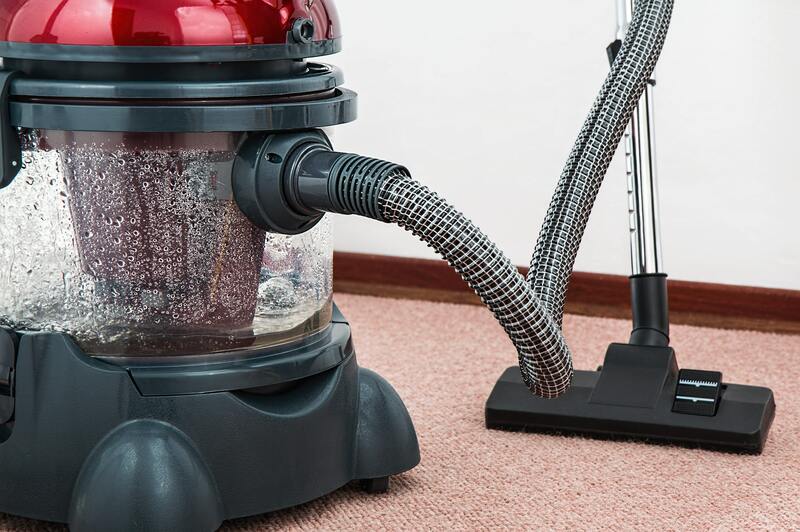Got a guest coming over but you’re still out here searching how to dry water damaged carpet? Don’t fret because you have come to the right place!
The good news is that even if your carpet has become completely saturated, there are still techniques to remove the moisture with a little effort.

Although it may be tempting, it is not recommended to overlook wet carpet stains because they will harm the carpet and padding underneath, cause an ugly stain, and encourage mold growth. Mold can contaminate your home’s air supply if left untreated, raising the risk of sickness.
What To Consider Before Drying Your Carpet
While it’s important to dry your carpet as soon as possible after a leak or water damage, you’ll be wasting your time if you don’t take care of a few matters first.
You must first locate and address the leak source before drying your carpet. Whether the leak is due to a burst pipe, a leaking roof, or another issue, you must address it before starting the drying process to prevent further harm to the carpet.
If you have furniture and items lying on a wet carpet, they will not dry correctly. Everything on the carpet should be moved to a clean, dry area.
Walking on a damp carpet can wear it down due to its fragile state, in addition to bringing in dirt. To avoid damaging your hard work, make sure that any object that would require you to return into the area is brought out before you start drying your carpet.
How To Dry Out Your Water-Damaged Carpet
Step #1. To aid absorption, drape large, thick towels over the wet regions and walk over them. Allow the towels to soak for around 30 minutes and then replace them after they are completely saturated.
Using a wet vacuum is another alternative. They are reasonably priced.
Consider enlisting the help of professional carpet cleaners if your wet carpet is completely saturated.
Step #2. You need to have airflow circulating around the room while the towels absorb the majority of the water. Turn on ceiling or freestanding fans to allow air to circulate around the moist area.
If you have an air conditioner, turn it on as well. Open windows to allow more air to circulate throughout the room.
This will help to get rid of any musty odors that have accumulated due to the moist carpet.
Step #3. Dehumidifiers are ideal for environments that are susceptible to moisture and mold. A dehumidifier will assist draw moisture from your house and prevent mold growth if you live in a flood-prone area or have leaks in your home on a regular basis.
Step #4. Qualified steam carpet cleaning is done at a very high temperature, which kills any toxins in the carpet. Even if you wash a carpet after it has been wet, bacteria may remain deep inside the carpet fibers.
Steam cleaning will be able to get to these nasties and get rid of any mold spores.
Step #5. A home solution such as baking soda can be beneficial for smaller spots of moist carpet. Spread baking soda over the wet spots after you’ve absorbed the majority of the water with towels and leave for 30 minutes.
Any leftover baking soda should be vacuumed away, and your carpets should be in good shape.
Step #6. If your carpet has been drenched with a substantial amount of water, the padding beneath it may have been harmed. Your carpet padding can be assessed by a professional carpet cleaner to discover if it needs to be replaced.
If your carpet padding gets wet, it can encourage mold growth and create an unsanitary environment in your house.
How Long Does It Take For A Carpet To Dry
It will take between 12 and 24 hours to dry a wet carpet and pull it off the floor using the proper equipment. If you don’t use fans or don’t pull it up, it will take two to four days.
For two reasons, you should dry the carpet as soon as possible. Mold can begin to grow in as little as 24 to 28 hours. Second, wetness can lead your carpet to disintegrate.
It will also be ruined faster if you walk on it when it is damp.
How To Reinstall The Carpeting
After sanitizing the sub-floor, vacuum away any dirt or debris using a shop vac. The carpet padding can then be installed.
Padding usually comes in rolls, although it can also come in sheets or tiles. Trim the padding to fit neatly in the space between the tack strips, filling the entire area.
You can restore your carpeting after the padding has been put. Check to see if the tack strips are still in great shape and, if required, replace them.
Then tack the carpet to the tack strips with a knee kicker tool. Now, you are free to wipe your last bead of sweat away!
If you think your carpet has been infested with mold, read this article to know what does mold on carpet look like and how to remove mold from carpet.
Conclusion
Learning how to dry water damaged carpet as part of cleaning the house may not be a piece of cake but it does not necessarily have to be a burden either! Save this article for future spills on your carpet.
